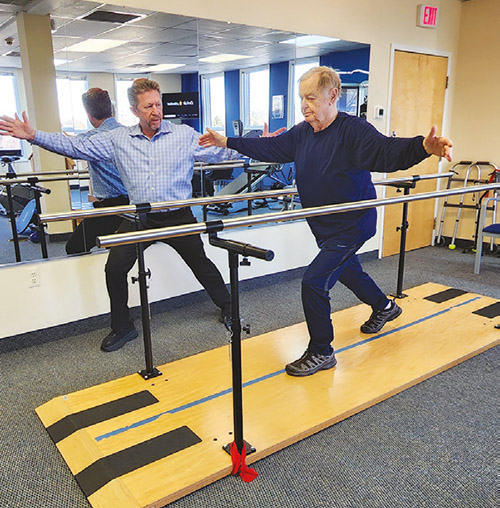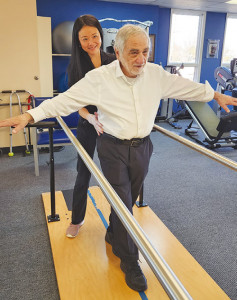
Falls among the older adult population have become a major concern in recent years. The number of older adults who fall each year is increasing, causing serious injuries and unfortunately, even fatalities. Falls can lead to a loss of independence, a decline in physical and mental health, and can result in costly medical expenses. While a single fall may be an isolated event, experiencing two or more falls within a 12-month period is considered a high fall risk. Unfortunately, once someone has a major fall, other debilitating health issues can ensue.
What Can Be Done to Lower Fall Risk

Physical therapy can play a vital role in reducing the risk of falls and improving overall balance. With age, balance can decline, increasing the risk of falls and injury. But physical therapy can help older adults maintain and improve their balance, giving them the confidence to stay active and independent.
Physical therapists are fully trained and knowledgeable in movement and mobility and can design customized balance programs to meet the specific needs of each patient. These personalized balance and exercise programs improve strength, stability and coordination, which helps reduce the risk of falls. These exercises can target specific muscles and joints that are critical for maintaining balance in areas like the core and throughout the legs.
Evidence Based Testing and Treatment Is Key for Success

While overall strengthening and balance activities are certainly beneficial, the key to success in improving balance is to have measurable, evidence-based outcomes. There are several evidence- based functional tests that a physical therapist can provide which will assess these measures and monitor your progress. These functional tests have ample research behind them to quantify balance and mobility deficits. Once the deficits are identified, a physical therapist will create patient-specific goals to find and help achieve them.
Most patients have their gait and balance evaluated using the method mentioned above. However, if you can have your balance screened via the Biodex SD balance machine, it will provide extensive objective data on the patient’s balance status. It uses incredibly precise sensors and software to measure the patient’s balance, stability and mobility. A typical balance evaluation on the Biodex would include static and dynamic balance testing, training modes for postural stability, weight shifting and motor control, all with interactive games. It also includes a comprehensive fall risk screening and conditioning program. The Biodex SD balance machine can also provide real-time feedback to patients, allowing them to see how their balance is improving over time.
Parallel Bars Are Crucial For Balance Training
Parallel bars are a vital component in physical therapy balance training by providing a safe, secure and supportive environment to practice balance exercises, and by allowing patients to progress at their own pace and build confidence and diminish their fear of falling. They are used to help improve balance, stability and coordination, and are especially beneficial for older adults who are at a higher risk of falls.
The use of parallel bars also allows for a variety of balance exercises, including weight shifting, stepping and walking. Although this is certainly beneficial for all unsteady balance patients, the parallel bars are especially useful when teaching patients exercises in the LSVT BIG program. This is a program specifically designed to help patients with Parkinson’s improve their overall mobility. Large motions with the arms and legs are encouraged to counter the small movements that are typical with Parkinson’s.
Tai Chi
Additionally, Tai Chi, a low impact form of exercise, has been shown in clinical research to be effective in improving balance, helping with overall stress, and maintaining strength in the body. It consists of very slow, dance-like movements that challenge both coordination and balance. The beauty of Tai Chi is that it is fun to do and also a form of mindfulness and relaxation, which can help reduce stress and anxiety, contributing to overall mental and physical wellness.
In conclusion, the benefits of physical therapy along with the added benefits of Tai Chi, the use of the Biodex SD balance system, and the use of full length parallel bars are all valuable tools for older adults looking to stay on their feet and maintain their independence.
Mitch (Mordy) Simpson, PT, MSPT OCS, LSVT BIG Cert., is the owner of Back to Health Physical Therapy. He has been practicing physical therapy for over 25 years and is board certified as an orthopedic specialist, LSVT BIG for Parkinson’s. and is a Tai Chi for Rehabilitation instructor. For more information, call (201) 833-0234 or visit bthrehab.com.













